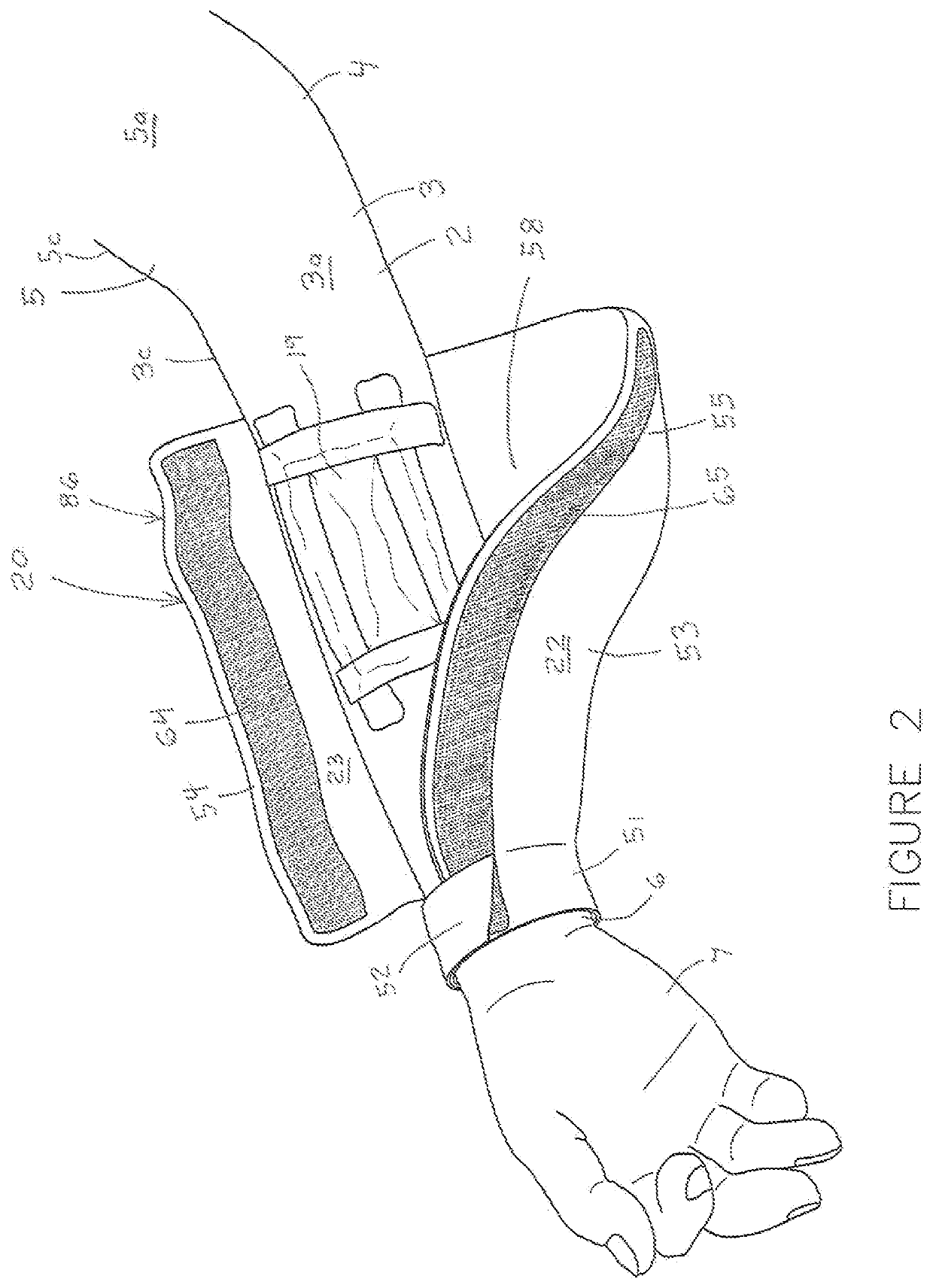Fistula Sleeve
a technology of fistula and sleeve, which is applied in the direction of protective clothing, garments, apparel, etc., can solve the problems of increasing the degree of bulging, elongating the bulge or series of bulges along the arm, and rendering the fistula susceptible to injury
- Summary
- Abstract
- Description
- Claims
- Application Information
AI Technical Summary
Benefits of technology
Problems solved by technology
Method used
Image
Examples
Embodiment Construction
[0036]While this invention is susceptible of embodiment in many different forms, the drawings show and the specification describes in detail preferred embodiments of the invention. It should be understood that the drawings and specification are to be considered an exemplification of the principles of the invention. They are not intended to limit the broad aspects of the invention to the embodiments illustrated.
[0037]The human arm 2 includes a forearm 3, elbow 4, upper arm 5, wrist 6, hand 7, fingers and shoulder. A layer of skin 8 covers and protects the arm 2, and defines its natural surface contours 9. The elbow 4, wrist 6, finger and shoulder joints allow for bending and flexing movement. The forearm 3 and upper arm 5 have rigid bone structures that define their longitudinal axes. Muscles, tendons and ligaments secured to or between these joints allow the arm to bend and move. Veins and arteries pass through arm 2 to provide its blood supply.
[0038]The forearm 3 and upper arm 5 ha...
PUM
 Login to View More
Login to View More Abstract
Description
Claims
Application Information
 Login to View More
Login to View More - R&D
- Intellectual Property
- Life Sciences
- Materials
- Tech Scout
- Unparalleled Data Quality
- Higher Quality Content
- 60% Fewer Hallucinations
Browse by: Latest US Patents, China's latest patents, Technical Efficacy Thesaurus, Application Domain, Technology Topic, Popular Technical Reports.
© 2025 PatSnap. All rights reserved.Legal|Privacy policy|Modern Slavery Act Transparency Statement|Sitemap|About US| Contact US: help@patsnap.com



